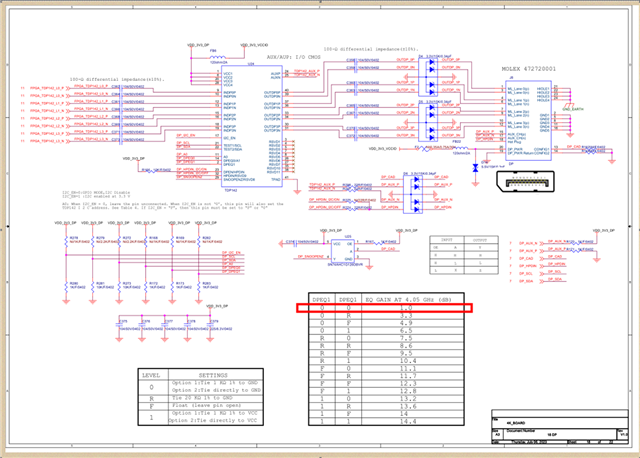Dear Expert
Our company uses FPGA+TDP142 to output DP video signals. I would like to inquire about some issues with the TDP142 chip. Thank you! The problem is as follows
1: AUX auxiliary communication signal AUX_ P and AUX_ Is N a pair of differential signals? How does it communicate with the display device. Chapter "9.2.1" of the TDP142 specification book discusses how FPGA communicates with TDP142 through AC coupling with FPGA?
2: Keep only DP_ Is it possible to disable AUX and SNOOPENZ with the HPDIN hot swap feature? AUX_ P-connected pull-down resistor, AUX_ N is connected to Pull-up resistor, and SNOOPENZ is suspended.
3: TDP142 has two communication modes: GPIO and I2C. Is communication necessary? Equalization can be controlled by external hardware and does not require sniffing function.
4: Does TDP142 not require sniffing function mean that the chip is running at full power? After checking HPDIN, output a video signal.



